'Teaching Transgender Awareness Using No Outsiders' - new film resource for schools
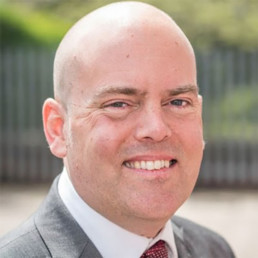
Written by Andrew Moffat
Andrew Moffat has been teaching for 25 years and is currently PD Lead at Excelsior MAT. He is the author of “No Outsiders in our school: Teaching the Equality Act in Primary Schools” and “No Outsiders: everyone different, everyone welcome”. In 2017 Andrew was awarded a MBE for services to equality and diversity in education and in 2019 he was listed as a top ten finalist in the Varkey Foundation Global Teacher Prize.
This week is Transgender Awareness Week which is a great opportunity to launch our new film, “Teaching Transgender Awareness using No Outsiders. The film shows that there are trans children in our schools today and many of those schools are doing an excellent job keeping them safe.
The Keeping Children Safe In Education guidance (Gov.UK, 2023) sets out expectations for schools to safeguard LGBT children;
“Risks can be compounded where children who are LGBT lack a trusted adult with whom they can be open. It is therefore vital that staff endeavour to reduce the additional barriers faced and provide a safe space for them to speak out or share their concerns with members of staff.” (para 204)
Schools in England and Wales are currently waiting for DfE guidance on gender and gender identity. In July 2023, The Times reported that proposed gender guidance had been pulled;
“A Whitehall source said that No10 and Badenoch had out forward a series of proposals to strengthen the guidance to the attorney general and government lawyers. The strongest – and a reflection of the governments concerns – was a blanket ban on social transitioning.” (Swinford, 2023)
The article quoted a government source saying:
“More information is needed about the long term implications of allowing a child to live as though they are the opposite gender and the impact that may have on other children too.” (Swinford, 2023)
The aim of this new film from No Outsiders is to show that schools are already working successfully with trans children and their parents. Schools are delivering age-appropriate lessons where children demonstrate knowledge and understanding and are taught about non-judgement, respect and acceptance of others.
My aim was to make a gentle film to take the heat out of the debate. In the film, we see Sam, a trans man living in Birmingham, return to his primary school to meet his former Y6 teacher. Sam sits in the seat where he sat as an 11 year old, and they discuss how his life has changed since then. His teacher describes how the school has moved on to reflect equality and inclusion today. Sam watches and comments on footage of a No Outsiders lesson at a school in Hertfordshire where transgender awareness is taught, and we hear Year 6 children speak eloquently on the subject. The film shows two parents (one is Sam’s Dad) talking about their experiences bringing up a trans child and the huge support they received from their respective schools. We also see Year 6 children in Bristol discuss texts used in their lessons and respond to the question, “Are you too young to know about this?”
I really wanted to show in this film that parents are working with schools, schools are listening, teachers are working hard to get it right. There is nothing scary or unusual about this. As teachers, we are good at putting the best interests of the children we teach at the heart of our policy and practice. My message to the DfE is, please let us get on with it. Schools want to get this right; we want to work with parents and children to create an environment where every child knows they belong.”
So, what now? What to do with the film? My first thought was to put a link on X (formerly twitter) and the No Outsiders facebook page, but I am aware of the toxic debate around this subject currently and I want to protect all the children and adults in the film. Of course, I realise once it is up on youtube, I lose control of who watches and where it goes, and in the coming months it may well pick up negative responses. but I feel in the first few weeks at least, for the first few views I would like allies to be seeing it. So, I immediately thought of Diverse Educators; a place where educators meet and support each other to make the world a better place. This should be the early audience for the film. Please feel free to share with friends and colleagues, show in staff meetings and use as a stimulus for discussion. I want people to see it. I hope people find it useful.
Watch the film here and feel free to share as you wish. https://www.youtube.com/watch?v=CIH7I_SEU0E&t=3s
What is No Outsiders?
The ‘No Outsiders’ programme was created in order to build an ethos of community cohesion and respect for difference. It has had a positive impact on schools, teachers, children, and communities and has received widespread commendation within the education sector. In 2017, CEO Andrew Moffat was awarded an MBE medal by The Queen (UK) for equality and diversity work in education. In 2019 he was a top 10 finalist in the Varkey Foundation Global Teacher Prize: a $1million award for outstanding contributions to the profession.
Teacher training related to the ‘No Outsiders’ programme has had widespread recognition. In the year 2023 January – November, Andrew Moffat has delivered No Outsiders training in 85 schools across the UK, and at numerous conferences and events, teaching over 35,000 children a No Outsiders lesson and training over 11,000 staff.
The No Outsiders guide “No Outsiders: everyone different, everyone welcome” is available here https://www.amazon.co.uk/s?k=andrew+moffat&crid=3OT7CA7JHVOS2&sprefix=%2Caps%2C308&ref=nb_sb_ss_recent_1_0_recent
A new No Outsiders scheme will be published April 2024.
Has EDI become a commercial business?

Written by Zahara Chowdhury
Zahara is founder and editor of the blog and podcast, School Should Be, a platform that explores a range of topics helping students, teachers and parents on how to ‘adult well’, together. She is a DEI lead across 2 secondary schools and advises schools on how to create positive and progressive cultures for staff and students. Zahara is a previous Head of English, Associate Senior Leader and Education and Wellbeing Consultant.
Last year, on my return to work after a short maternity break, I wrote a very candid post about leading EDI in schools. Almost a year on, I have had some wonderful opportunities with DiverseEd, The GEC, Teachit, Edurio, Schools Week, SecEd, Middle East Eye…all talking about diversity, equality and inclusion in education. Now working in the Higher Education sector, I am learning so much about intent vs impact, using Driscoll’s model of reflection. In using Driscoll’s model, I find myself questioning the EDI ‘work’ more and more – not its necessity (believe me, it’s more needed than ever), but whether or not it is making a sustainable impact and lasting change, or whether it is simply at risk of being a step on a ladder, a set of buzz words and a marketing asset for schools and organisations.
Is it right to be an EDI Lead?
George Floyd’s murder can be regarded as a watershed moment for anti-racism work, but also for diversity and inclusion. With the rise of Gen Z, Gen Alpha and social media, the EDI landscape has, in many ways, rocketed and quite rightly so. Although many think it drives a cancel culture and a call out culture, it has also led to meaningful change for people with protected characteristics. Equally, a growing number of companies are making EDI roles bigger, smaller or redundant. Speaking to friends and colleagues in the ‘field’ (especially global majority heritage colleagues), it seems EDI is a thriving, purposeful business, but one which is exhausting and draining too. To be completely candid, I have reflected and wondered whether I am toxically ‘profiting’ from my own ‘EDI’ trauma, story, knowledge, expertise (whatever you want to call it) and sometimes feel a level of guilt, imposter and also, loss.
It’s tough being vulnerable in the public and professional eye, laying bare your identity for the sake of strategy, culture, governance, policy and practice. I also worry about what’s next? Not necessarily because I think EDI will become redundant (this thought in itself is problematic and misplaced). Rather it is mentally and physically tough to work in a field so rich and granular, that I worry where and how the energy can be sustained.
The work is purposeful, important and of value. However, for it to be impactful and fulfilling we must start holding organisational leads, middle management, policies and practices to account. If there are policies and practices which have a detrimental, and historic impact on individuals with protected and non-protected characteristics (socio-economic status for example), no amount of training is going to fix that. Experience and very loose, qualitative research (candid conversations!) reveals consistency and commitment to inclusion at middle management level is just as important (if not more) to creating a culture of belonging.
To flip from business to culture, it is integral that leaders and managers intentionally and uncomfortably make the difficult changes necessary to create equitable work environments. Celebrate whistleblowing and call our culture, scrutinise and fix representation gaps, embrace flexibility and use positive action, inclusive recruitment strategies; do what you have to do to create a trusting and lasting culture for every employee and student.
Diversity across the curriculum is scratching the surface.
Whilst a diverse curriculum and EDI training is wholly important, and can have a life changing impact on young people (especially Early Years), it is but one cog in a set of very large and complex wheels. In my relatively short time of working in this space, I’ve learned just how easy it is to become a ‘tickbox’ or a ‘box ticker’, without even realising. All too often EDI is boxed in; it’s carved out like an isolated gym session (stick with me). We all know 1 run, 1 personal training session, or 1 class a week will not make a difference to our health unless we see to our eating habits, our mindset, consistency, our NEAT actions. A brilliant guest speaker may leave us high on endorphins like a Spin class, but then what? EDI is a hard, constant and ‘infinite’ journey that should never be redundant or complete – the world is ever-changing and diversifying, in our lifetime at least. If this thought leaves you exasperated or frustrated, flip those feelings and be curious instead: it provides a perfect opportunity to speak to an EDI specialist or students and staff with protected characteristics to ask, how can inclusion and belonging become an active part of day-to-day, micro and macro policies and practices in your workplace? Listening is important, developing and actioning a plan is fundamental.
In her book, The Courage of Compassion (2023), Public Defender, Robin Steinberg says ‘the struggle for social justice is won […] one person at a time’. With every feeling of imposter and exhaustion I simultaneously realise just how purposeful, impactful and necessary equality and diversity is – in education, the workplace and society. Of course, the ‘business’ of finding solutions and making a tangible impact is very important, however the ongoing work, the self-reflection, the side-by-side influences, are perhaps integral to keeping diversity and inclusion at the centre of every business and organisation.
Launching a network for new leaders made me a better ally
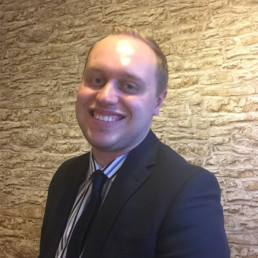
Written by Ben Hobbis
Teacher, Middle Leader and DSL. Founder of EdConnect and StepUpEd Networks.
Are you a new leader, like the idea of leadership but struggle to find the balance between teaching and leading? Are you someone who wants to lead or be a leader, but not knowing how to get there, feeling a bit stagnant? You might be a leader developing, but in the wrong organisation? You might not see leaders like you? This is why Step Up was set up.
Step Up is a new network for new and aspiring leaders in education, particularly at middle and senior leadership levels in schools. Upon starting the social media account, and subsequent network, we surveyed people to find out who our community are and what they want/need. This has been incredibly useful. It’s been great getting to know our community.
From this research and insight, we have constructed five ‘leadership themes’ that we base our content and output around. We base our speakers, events, blogs and much more around these themes. The five themes are: Leadership Journeys, Leadership Barriers & Challenges, Leadership Development, Leadership Wellbeing and Leadership Diversity. Now, whilst many of these will overlap when people speak, present and write to these.
I personally as the founder wanted to ensure that whatever we do, we are inclusive and that we are diverse in order to create a community where our network members belong. Now, as a heterosexual, white, able bodied, cisgender man who doesn’t have children and is fairly financially stable, I know I’ve had it easier than others. However, I have always committed to be an inclusive ally and a HeForShe ally also. I have been a keen supporter and champion of Diverse Educators since signing up to social media and their journey started. One thing I have released is that I’ve continued to learn as an ally.
One of the biggest learning curves was Step Up’s Launch Event. As I co-hosted alongside one of my fellow network leaders, WomenEd’s own Elaine Hayes, I listened attentively to our speakers. I listened to their vulnerability; to their negative and positive experiences; to their struggles; to their hopes and wishes; to their experience and tips. I felt quite emotional in parts listening to in some cases abhorrent behaviour that they (or colleagues, friends or family) had been subjected to as part of their journey.
I’ve summarised some of the key takeaways from some of the presentations, that may be useful for the audience reading this…
Parm Plummer, WomenEd’s Global Strategic Leader and a Secondary Assistant Headteacher based in Jersey presented on Women in Leadership. Her talk initially started with sharing the fantastic work of WomenEd: their campaigns, partnerships, networks (including their global reach) and the development opportunities they provide for female leaders. Parm then went on to help navigate the process of stepping up as a female leader. Initially, sharing the only image of a woman that came up during a Google search; before going on to provide tips to write a job application through to negotiating your terms. Parm gave tips including finding allies and joining networks.
Helen Witty, a neurodivergent Lead SENDCo based in the East of England who gave a pre-recorded video on Neurodivergent Leadership. She shared an insight into her job and life, as a SENDCo with ADHD. She shared about how being open about her ADHD at her job interview and how it positively impacts her life and those who she works with. Helen also gave a fantastic insight into the role of a SENDCo, for all those who aspire to this role.
Stephanie Shaldas, a secondary deputy headteacher leading on diversity and inclusion based in London. Her talk Leadership in Colour: Senior Leadership as a Black American Woman started with a story from March 2021 whilst she was working as an Acting Co-Headteacher. This story was based around Prince William visiting her school. What was a forty-five minute visit, led to a weekend of trending on Twitter, including one Tweet: ‘Who dressed up the secretary in African cloth and trotted her out?’ Stephanie went onto talk about her journey and how she felt like school leaders didn’t look like her, when she was in her early career. She shared her inspiring path to leadership including her own education as well as teaching and leadership roles at middle and senior level spanning both curriculum and pastoral. As Stephanie said, “If I can, then you can!” – find your why and explore your passions!
Mubina Ahmed, Head of Science Faculty, based in London gave a presentation titled: ‘Using my minority lens to lead.’ Mubina went on to talk about how she used her minority ethnic background to her strength in her leadership journey. She posed the key question: ‘Do we have equity in teaching?’ Mubina used research and evidence to back up every piece of advice and information that she gave; talking about building allies to help you bring your chair to the table.
Albert Adeyemi, co-founder of Black Men Teach and a Head of Year based in the East of England gave a talk based around wellbeing and belonging in leadership. He spoke eloquently about the importance of wellbeing, how every interaction with others builds up to this. He narrated the sense of being needed versus feeling wanting and knowing what you need to fill your cup, to achieve wellbeing and belonging. The part that really blew me away was a surprise from Albert, a spoken word about belonging; a part of the event which brought a tear to my eye.
Jaycee Ward, a phase leader in a Yorkshire primary school, spoke about imposter syndrome, based around her journey as a young senior leader. Jaycee narrated her journey to date and how she has completely changed her narrative and inner critic. She shared her five top tips for combatting imposter syndrome: Seek Support, Embrace Vulnerability, Celebrate Achievements, Self-Compassion, Self-Reflection. Something, everyone at the event resonated with.
Nicola Mooney, a secondary deputy headteacher based in the South West of England, who also volunteers for WomenEd and MTPT Project, gave an interesting presentation on ‘non-linear career paths’. She shared her journey through her career to date including multiple maternity leaves and periods of IVF. Nicola shared how by not going through the ‘traditional’ upward trajectory has enabled her to be successful both as a teacher and as a mother. It was a talk many welcomed, knowing it is not as simple and always useful to be continually promoted.
I feel very privileged to have spent time in the virtual room with these fantastic Diverse leaders. Step Up (and I) will continue championing for diversity, equity, and inclusion within the education leadership sector; and will ensure everyone has the chance to share their stories. If you want to get involved and find out more, then follow us on X (formerly Twitter) @StepUpNet_Ed and check out our website: www.stepupednet.wordpress.com.
No time to say “we don’t have time” when it comes to diversity in literature
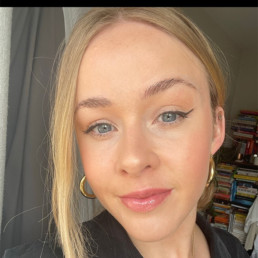
Written by Jessica Tacon
Jessica Tacon is second in charge of the English Department at City of London Academy Highgate Hill and is a member of NATE’s (National Association for the Teaching of English) ‘Reviewing Literature’ working group. She created The Right Writing campaign which aims to improve racial diversity in English Education.
Knee-jerk: “a quick reaction that does not allow you time to consider something carefully”
When a topic or issue becomes present in the public eye (often despite having always been of paramount importance, as is the case with diversity and inclusion in education) or it begins to feel more urgent, there can be pressure to actively resist or even just to react.
The pressure that I am referring to here comes from the expectation that education should be diverse and inclusive, something which has failed to be considered over decades. The pressure point is the realisation of this failing; the need to respond becomes pressurising as organisations need to be seen as doing the ‘right’ thing.
But the bottom line is that schools absolutely must not be exhibiting knee-jerk or quick-fix solutions to improving the diversity and inclusion of education. We need to make it a priority to find that beautiful balance between speed and solutions; remember, the first organisation to make changes in the way of diversity and inclusion is not necessarily the organisation doing the work most properly.
Making time, not taking time
Showing support for a cause without taking action at first can be a good thing. Note I said “can”. Far too many organisations, schools included, have used the excuse of wanting to ‘take their time’ as a guise for the fact that, actually, diversity and inclusion isn’t their priority. To this aim, time must be carved out at a systemic level to plan, implement and maintain changes in the education sector.
What can this look like? In reality there isn’t a one size fits all approach, it can look like many things. For specific questions to help schools to approach changes or to reflect on whether their current approach(es) are purposeful in the ways that truly matter, please see the full version of this article on the Pearson website.
With so many pressures on our time and headspace, tokenism, virtue-signalling and ‘quick’ fixes (which usually fix very little) can be tempting. But when we look at the absolutely unarguable benefits of a truly diverse and inclusive education, we cannot afford to not consider every single aspect of the above questions in everything that we do.
Evaluating English
Let’s look at the subject of English as an example. English A Level uptake has been declining for some time; research is still being done as to why but initial findings show that students do not feel that English is relevant for them or offers them career pathways. In 2018/19, only 19% of students who took English Literature at A Level were Black, Asian or of a Minority Ethnicity (Source: GOV.uk available on request).
Where does this lack of students studying English at A Level come from? In 2018 The Runnymede Trust found that nearly 92% of teachers in state funded schools were White, in 2020 Publishing Perspectives found that only 13% of people working in the publishing industry were Black, Asian or of a Minority Ethnicity and it is not unusual for a pupil to leave school having never studied a book by a Black author, as shown in research carried out by Penguin Random House. It does not take too much evaluation to see the vicious cycle that has been created: everywhere that young people turn they do not see themselves. This forms one example of why all the aforementioned changes need to happen, if it even needed to be pointed out in the first place.
A real reflection
As the writer Junot Díaz puts it:
“You know, vampires have no reflections in a mirror? There’s this idea that monsters don’t have reflections in a mirror…It’s that if you want to make a human being into a monster, deny them, at the cultural level, any reflection of themselves. And growing up, I felt like a monster in some ways. I didn’t see myself reflected at all.”
What Díaz describes here about representation is one facet of these changes; schools must look beyond “representation, and the pitfalls of tokenism, to thinking about how schools can be proactive in tackling racism” as The Runnymede Trust puts it.
Ultimately, what we are offering in educational settings is not truly an education until every aspect of education has changed to represent, include and celebrate every child. We are already behind, now we must come together and push forward diversity. There is no other option.
Take Back the Narrative: Reflections on #DiverseEd Conference

Written by David Church
David is an LGBTQ+ education consultant and former Deputy Head Teacher. He has over 10 years experience in education and is passionate about supporting schools to develop an LGBTQ+ inclusive culture and curriculum. Outside of education, David is a Regional Ambassador for It Gets Better UK.
Attending the #DiverseEd Conference in Bristol on Saturday felt perfectly timed. The backdrop of recent developments from the UK government regarding the trans community weighed heavily on my mind as I prepared for the day ahead. It seemed as if the trans community was under siege from multiple angles: teachers potentially being allowed to discriminate against trans young people in schools (https://www.thepinknews.com/2023/09/23/ehrc-guidance-trans-misgendering-pupils-schools/) and the proposed ban on trans women from women’s wards (https://www.theguardian.com/society/2023/oct/03/trans-hospital-patients-in-england-to-be-banned-from-female–and-male-only-wards).
As a cisgender gay man who had previously faced adversity under the infamous Section 28 (and the legacy since), I felt a deep empathy for the trans community, witnessing their increasing vulnerability and the reported surge in hate crimes against them (https://www.gov.uk/government/statistics/hate-crime-england-and-wales-2022-to-2023/hate-crime-england-and-wales-2022-to-2023).
As an LGBTQ+ education consultant, I was acutely aware that action was needed to ensure the safety of trans+ children, young people, and staff in schools. Fortunately, the conference offered a range of sessions on just this, highlighting the need for greater trans inclusion & diversity.
Every session I attended resonated with me on both a personal and professional level, but my mind was consumed with the urgent need to address the ongoing challenges faced by the trans community.
The first workshop I attended was led by Sarah Bonnell School, focusing on social justice in schools and empowering students to enact change within their communities. Their discussion of “cold anger” as a catalyst for change struck a chord with me (https://www.psychologytoday.com/gb/blog/brave-talk/202109/4-types-anger-everyone-should-know-about). This anger, when harnessed, could drive the transformation needed to combat the prevailing discourse around trans inclusion.
Equally, Shaun Dellenty’s keynote, highlighted the importance of challenging the narrative of fear and division, emphasising that we are stronger together, whether or not we identify as trans. The theme that stuck in my mind: How do we channel this anger and negative energy into positive action?
Similarly, in Bennie Kara’s keynote, the power of stories to reshape narratives was explored. She discussed how we need to move beyond viewing the trans community as victims or dangerous (a perception which has continuously been fed by media and entertainment). The history of LGBTQ+ rights is full of unsung heroes such as Marsha P. Johnson and Sylvia Rivera, who spearheaded the original Stonewall uprising. Yet, their stories are often overlooked in the narrative of our school curricula.
It is imperative that we teach about these individuals to reframe the narrative and challenge prejudices and biases. This will foster a more respectful society, one that goes beyond mere tolerance to genuine acceptance of every individual, regardless of their identity.
Jo Brassington, in their session on trans and non-binary inclusion in schools, passionately reminded us that silence and indifference regarding trans+ inclusion make us complicit. It reminded me of the words of David Morrison, Chief of Army in the Australian Army, which echo this sentiment: “The standard you walk past is the standard you accept.”
This is not about understanding what it means to be trans but about having compassion and acceptance for every trans person; knowing them as individuals and hearing their story. Stories have been central to human culture since time began, and it is now time to reshape these stories in the public eye. As agents of change, we must stand with the trans community, working towards a compassionate view that acknowledges them as individuals.
The #DiverseEd Conference offered a glimpse into the power of collective action, empathy, and storytelling to take back the narrative, ensuring that the voices and experiences of the trans community are heard, respected, and valued. We, as educators, have a unique opportunity to lead this transformation, shaping a more inclusive and compassionate society by ensuring our curriculum fosters a positive narrative of a range of trans people; from the books we read, to the significant role models we explore and the policies we have in place. Taking back the narrative is not just a goal; it’s a collective responsibility that we must all be conscious about in our schools.
My Journey as a Part-time Senior Leader
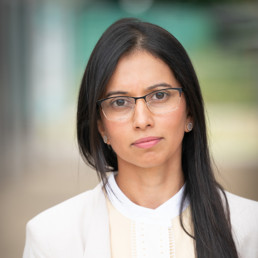
Written by Harroop Sandhu
Harroop Sandhu is a senior school leader and professional coach, with 17 years of experience driving successful strategies and improving outcomes in various educational areas. Most recently she has led her school to successfully achieve the Send Inclusion Award, as well as spear-heading the organisation's DEI strategy. Her approach is to ensure that DEI work is integrated within the strategic aims of the organisation leveraging existing leadership tools.
Three years ago, the notion of transitioning to part-time work was nowhere on my horizon.
Life took an unexpected turn when one of my children fell ill, prompting a pause on my career to refocus on what matters the most. Amid navigating my child’s health needs, I found myself in survival mode. Emerging from this challenging period, I returned to part-time work after a two-month gap, encountering initial hurdles. However, as I gradually found my rhythm, an unforeseen preference for this new way of working emerged.
Within this experience, I’ve uncovered valuable insights.
Myth #1: Working Part-Time Means Less Effectiveness.
Contrary to common belief, working part-time doesn’t hinder efficiency; it can actually enhance it. The gift of more reflective time has nurtured my creativity and innovation.
Success in this arrangement hinges on disciplined time management; I remind myself I’m paid for three days of work, not squeezing five into three.
Liberating myself from guilt and the need to prove myself has been a pivotal realisation.
Tips
- Effective time allocation is key.
- Balancing work, family, commitments, and especially self-care all demand careful planning and allocation. Don’t put yourself last or squeeze it in.
- Silencing self-criticism about perceived weaknesses is part of the journey toward self-compassion.
Myth #2: Part-Time Work Signals Lack of Ambition.
Embracing part-time work has deepened my commitment to personal growth.
While some argue full-time dedication accelerates progress, I’ve found fulfilment in having the mental space for development and time to pursue other interests, aligned with my sense of purpose. I have found that I have more time for coaching and other professional development, which in turn benefits my employer and as well as myself.
This flexibility has also inspired others, resulting in increased requests for flexible arrangements—an indicator of impactful leadership.
Tips
- Celebrate your achievements and acknowledge your aspirations.
- When you silence doubts, your strength and dreams amplify.
- Before constraining yourself, seek input from others to broaden your perspective.
Myth #3: Missing out on Connection and Opportunities.
Initially, the challenge of navigating communication arose from a fear of missing out due to absence. However, I’ve learned that communication quality outweighs quantity.
Utilising strategies like follow-up emails and regular check-ins helps maintain involvement.
Open conversations marked by transparency with superiors foster mutual understanding.
Addressing unique experiences benefits not only you but also those around you.
Tips
- Express your needs openly with your line manager.
- Ensure your scheduled time with your line manager remains intact and isn’t cancelled.
- Propose suggestions and solutions, but don’t shoulder the burden alone.
Myth #4: Flexibility Equates to Unreliability.
Unreliability often arises from overcommitment or lack of planning. Overcoming guilt and the desire to overcompensate, by embracing strategic time management and open communication was enlightening. Prioritisation, clear communication, and collaborative solutions with my line manager helped navigate this. As well as, balancing tasks and seeking help as needed cultivating a win-win situation.
Tips
- Consider what you might need to say no to when saying yes to additional tasks.
- Involve your line manager in this process. It could involve acquiring more resources, creating space, or delegating tasks.
- Don’t hesitate to seek compensation for work beyond your designated hours.
- Effective leaders recognise their boundaries. Don’t be afraid to say no.
I believe that Flexible working is a solution for not only working parents, but for people that are looking to explore personal growth or navigate other areas of life outside of their work. This autonomy can lead to greater job satisfaction and happier employees who are likely to be more creative, innovative and productive.
Turn Up, Speak Up and Speak Out
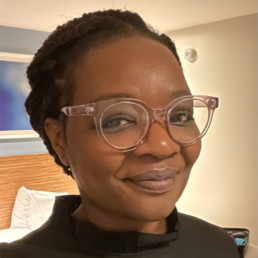
Written by Frances Akinde
Frances Akinde is: a SEND Adviser & Inspector; an AT trainer; an Art Advocate; an Anti-racist schools coach and a ND Champion. She is a former advisory teacher (SEND/SLCN) and Secondary Special Headteacher (Autism). She holds certifications including NPQH, MAEd, NASENco.
During the last weekend of May 2023, I attended the TUC Black Workers conference on behalf of the NAHT (National Association of Head Teachers).
The TUC (Trades Union Congress) is a federation of UK trade unions representing around 5.5 million workers from 48 unions across industries, all committed to collective action. One of the main requirements of affiliation is that-
‘An organisation has a clear commitment to promote equality for all and to eliminate all forms of harassment, prejudice and unfair discrimination, both within its own structures and through all its activities, including its own employment practices.
TUC rules and standing orders | TUC, last updated June 22.
The NAHT joined the TUC in October 2014 under Russell Hobby, who was general secretary at the time. The other education unions that are members of the TUC are the NEU, NASUWT and the NSEAD (a specialist trade union for art, craft & design educators, which I am also a member of), the Scottish union EIS and Welsh union, UCAC amongst others. Out of the four biggest teaching unions, only ASCL is not a member of the TUC.
The TUC holds a number of annual conferences that supplement the general work of the congress. The Black Workers Conference, in particular, focuses on issues and concerns affecting Black workers in the UK. In this context, Black is used as a political term to describe all workers of colour. The conference is used as a platform for Black workers and their trade union representatives to discuss and address issues around racial discrimination, inequality and barriers to employment. It is also a good chance to network and share experiences.
As a member of the NAHT Leaders for Race Equality network, I saw attending the conference as a chance to learn from the TUC’s anti-racist efforts and how this is being applied in the NAHT and other education unions.
In October 2022, The TUC released a report, ‘Going forward: An action plan to build an anti-racist trade union movement’. It states that ‘For our unions to thrive, recruiting Black members and addressing racism at work has to be at the core of our work. This will grow our movement, make it diverse and truly representative of the working class of modern-day Britain.’
From Action plan to build an anti-racism trade union movement | TUC
This Black Workers conference was the first since the action plan was launched. Various motions were presented to build on this commitment, including ones from the NEU and NASUWT.
One of NASUWT’s motions focused on tackling Islamophobia and anti-Muslim hate in all forms within our education system. This is part of their ‘Big Conversation on Racial Justice’ campaign, which was launched in 2021.
NASUWT | Big Conversation on Racial Justice
One of NEU’s motions focused on tackling institutional racism for all workers, building on work already presented in their ‘Anti-racism charter: Framework for developing an anti-racist approach,’ which is based on the testimony of over 1000 Black teachers about the impact of racism in their workplaces.
As well as listening and voting on the motions, I also attended a variety of workshops and talks, which were all very inspiring.
Overall, I enjoyed attending the conference. I left feeling empowered and energised by the activism I witnessed and the powerful discussions that took place. Since attending this conference, I have grown even more determined to turn up, speak up and speak out against racism and other inequalities.
However, despite NAHT being a large union of around 49,000 members, more specifically, over 100 members within the Leaders of Race Equality network, I was the lone delegate. In contrast, there was a large representation from both NASUWT and NEU.
The TUC’s ‘Jobs and recovery monitor – BME Workers 2023’ report, published May 2023, highlights that-
‘BME workers face systemic disadvantage and discrimination in the labour market, whether it be lower employment rates and higher unemployment rates, lower pay, more insecure work, or occupational segregation.’
Jobs and recovery monitor – BME Workers 2023 | TUC
Black leaders in education are not exempt from this, and sadly, many of us have been the victims of both racism and performative allyship. Therefore, it was disappointing not to have more members from NAHT there.
With over 800,000 members represented across our education unions, our unions have the power to use their combined voices to successfully campaign for critical issues such as fairer pay and Ofsted reforms. Education’s next priority needs to be committing to actively working together to eradicate systemic racism in education. Part of that is ensuring that Black leaders in education are actively part of national conversations around tackling inequalities, as our voices are crucial.
10 Engaging Diversity Books for Children: Promoting Inclusion and Understanding
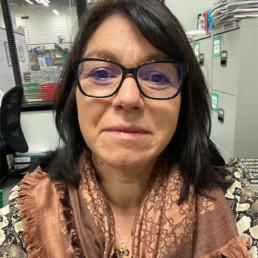
Written by Rachelle Carter
Rachelle Carter is co-director of Madeleine Lindley Ltd, a key children’s book supplier based in Chadderton, Oldham. Its staff are experienced and well-equipped to help primary schools rejuvenate and refresh their class libraries with the latest and most engaging books. The business has played a vital role in supplying many of the UK's primary school libraries for over 35 years.
Reading across a range of cultures and experiences not only broadens children’s worldviews but also nurtures an appreciation of the wider world. Being exposed to a range of books that cover different representations allows children to feel connected and included, and allowing a child to explore various narratives through books through a multitude of narratives is a cornerstone in exposing a child to inclusion and understanding.
Here, children’s literacy specialist Madeleine Lindley Ltd explores ten notable books that celebrate diversity, promote inclusivity, and stimulate the imagination. For primary school teachers, this list can serve as a great starting point from which to build a classroom library or wider school library with books that promote inclusion. It is important to remember that the representation of diversity will differ from classroom to classroom. Use this list to explore the types of books you can consider for your classroom, and explore the broad range of diversity and inclusion books yourself to find the perfect books for your children.
1. Uncle Bobby’s Wedding by Sarah S. Brannen
Uncle Bobby’s Wedding takes a delicate approach to introduce the concept of same-sex marriages. As the story unfolds, young readers journey alongside Chloe, the protagonist who initially fears she will lose her beloved Uncle Bobby when he announces his wedding. The story’s gentle narrative helps children understand that love transcends all boundaries and that families come in all shapes and sizes. Moreover, it instils the idea that a change does not equate to loss, a valuable lesson for children.
2. The Best Me! by Marvyn Harrison
In The Best Me!, Marvyn Harrison promotes the importance of self-esteem and individuality, focusing on the central character’s journey, Nia. Nia learns to embrace her unique identity and sees the beauty in everyone’s differences, breaking away from societal expectations. The book delivers the fundamental message that everyone should feel empowered to be their true selves.
3. The Proudest Blue by Ibtihaj Muhammad and S.K. Ali
The story revolves around Asiya’s first day of school, with her wearing a bright blue hijab. Her younger sister, Faizah, sees Asiya’s hijab as a symbol of pride and strength. The Proudest Blue introduces children to the concept of faith in oneself and the richness of cultural diversity, helping them recognise and respect religious practices that might differ from their own.
4. Grandad’s Camper by Harry Woodgate
Grandad’s Camper presents a loving relationship between Grandad and Gramps. Following Gramps’s passing, Grandad ceases his adventuring until his granddaughter reignites his passion. The book addresses LGBTQ+ relationships and loss sensitively, fostering understanding that love is universal, extending beyond conventional family setups.
5. Speak Up! by Nathan Bryon
Speak Up! is a compelling narrative about using one’s voice to champion what’s right. The protagonist, Rocket, inspires children with her bravery, as she stands up for her community’s park. This story encourages children to be courageous, fostering a sense of responsibility, and motivating them to stand up for what they believe in.
6. Just Like Me by Vanessa Brantley-Newton
Just Like Me is a collection of poetic narratives, celebrating diversity, self-love, and acceptance. Vanessa Brantley-Newton’s character-driven poems encourage children to explore and celebrate their identities, recognising that everyone’s story is unique and equally important.
7. The Bubble Boy by Stewart Foster
The Bubble Boy introduces the character of Joe, a boy with severe combined immunodeficiency who lives in a sterile environment. This narrative fosters empathy, giving children a glimpse into the lives of those living with health conditions, ultimately encouraging them to be understanding and respectful.
8. Jamie: A Joyful Story of Friendship, Bravery and Acceptance by L. D. Lapinski
Jamie paints a picture of an inclusive world where each individual is unique and cherished. The story explores themes of friendship, bravery, and acceptance, helping children appreciate the diverse characteristics that make us all human.
9. Fight Back by A. M. Dassu
Fight Back explores the resilience of a young refugee, teaching children about the realities of displacement and courage. This book encourages understanding of global issues and empathy towards individuals who’ve experienced adversities beyond their control.
10. No Ballet Shoes In Syria by Catherine Bruton
This book captures the experiences of Aya, a refugee girl in Syria who finds solace in the world of ballet. No Ballet Shoes In Syria allows children to empathise with the struggles of refugees and appreciate the power of passion, dedication, and the arts.
Find diversity books for your library
Cultivating an environment that values diversity is an important part of fostering an enriching, inspiring, and inclusive environment for your children. To help you in doing this, Madeleine Lindley Ltd helps curate an inclusive, engaging, and ever-evolving reading environment for your primary school. By filling your library with books that celebrate differences, you are not just introducing children to a multitude of perspectives, but also instilling a lifelong love for reading.
Woke, but not too woke?
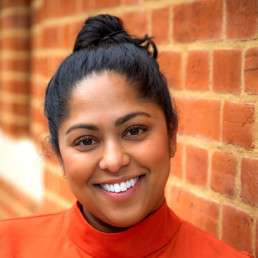
Written by Bilkis Miah
Bilkis brings a powerful perspective to the table, shaped by her upbringing as a British-Bangladeshi immigrant. With experience in both management consulting and the education sector, she offers a rare blend of expertise and cultural insight. Her unwavering commitment to breaking down barriers and challenging norms has positioned her as a powerful voice for change. Bilkis is not just a thought leader, but a driving force for positive impact, inspiring and empowering communities everywhere to re-imagine what is possible.
Inclusivity, or ‘wokeness’ as it’s come to be known, isn’t political correctness gone mad, it’s an essential move for our children.
To see how ‘wokeness’ is perceived in education, you only have to open the newspaper to see that Robert Halfon, Chair of the Education Select Committee, condemned the use of the term ‘white privilege’ last year. Halfon claimed – and this is as much as I can agree on – that there is an ‘opposite reality [to privilege] for the white working class across society’.
But surely this is a question of semantics? Isn’t it more important to make sure we’re not entering a class war, and pitting one group against another? Using terms like ‘white privilege’ isn’t the reason why so many white working-class children are failing. It’s a systemic problem, including underfunded schools, economic inequality, and the lack of opportunities for social mobility.
Understanding communities
So, what’s even more important is that we come up with initiatives and programmes that help future generations. For this to work, it’s important to listen to the community, such as teachers and parents, but also to ask children what they need. We need to understand the context that is breeding such inequalities, and let communities know that their voices are being heard. We’re all complex and layered humans, and there are nuances to navigate. For example, in Tower Hamlets where we’re based, there is a majority British-Bangladeshi and white working-class population. Things like living in an intergenerational home, or having parents who have little or no formal education are real issues that our children have to deal with. When we asked parents what they were worried about, it was the same common theme – they were worried about losing their children to a world they didn’t understand.
But there needs to be impact on beliefs and understanding the community has over these issues. It has to reach communities beyond the school gates, it can’t just be up to teachers. This is where we saw an opportunity to take parents and carers from all backgrounds on a journey to clearer awareness; one that helps communities understand what we mean by diversity and inclusion and to have the tools they need when they come across it in their lives. We do through our home activity kits. The kits encourage families and children to think and learn about themselves and the world around them through fun, paper-based activities. Importantly it doesn’t centre around having digital access – digital poverty in our community is a real obstacle – rather, the focus is on spending quality bonding time away from the screen through activities like journaling, reading and art to name but a few.
Real-world wokeness
Last year we saw St Paul’s Girls School renaming their ‘head girl’ position to ‘head of school’. This may seem like a superficial change, but the reasons behind it are key. And no, this isn’t ‘political correctness gone mad’. It’s really important that we don’t define our pupils by gender, race, religion, sexuality, class or ability. All the stereotypes that come with these narrow categorisations have wider societal implications. By changing the title from ‘head girl’ to ‘head of school’, staff are saying to their pupils, ‘We recognise you, and you can achieve anything regardless of your gender’. It’s not boxing girls into certain roles, or qualifying success with terms like ‘girl boss’ – you’re a boss, period. This is so important when we think about a healthy, diverse workforce for the future. Even in our pilot project, we’ve heard comments from children such as “Boys will have more important jobs as they have bigger brains.” Statements like these may seem inane, but it’s essential to dismantle them as soon as you notice them, so they don’t have the opportunity to entrench further.
Importantly, when you’re talking about making sure to teach about stereotypes at school, and embedding this into school policy, make sure to take families on the journey with you. It never ceases to amaze me how many schools don’t necessarily ask parents the tough questions: ‘What worries you?’, ‘What are your main concerns around teaching about stereotypes?’. Not only does this let families feel heard, but it allows you as the teacher to understand their concerns, and have the opportunity to allay some of those fears. More often than not, parents want the same as you – for their children to have all options open to them.
The Pen and The Community: What a football cage taught me about community
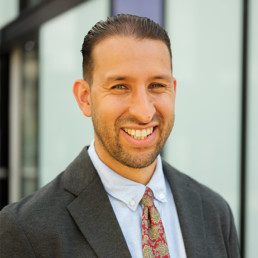
Written by Mohamed Abdallah
With almost two decades of experience, Mohamed started his journey in youth work and pupil referral units before spearheading groundbreaking inclusive practices and systems as a leader in an 'Outstanding' all-through mainstream school. Driven by a relentless commitment to positive change, Mohamed now dedicates his efforts to collaborating with school leaders across the nation as the Head of the Inclusive Leadership Course at The Difference.
“We are meaningful as individuals only through our interconnections”
Alexander and Conrad (2022)
The “success” I experienced as a youth worker, a practitioner in a Pupil Referral Unit, and as a senior leader in mainstream schools has at times been credited to me or my leadership, and that often makes me feel uneasy.
Partly because I experience imposter syndrome on a regular basis. But mostly because everything that “I have achieved” only happened through collective efforts.
It was only achievable because a community of people pooled together their desire, commitment, skills and knowledge to make a difference to the lives of children.
And this is why I don’t believe in individual heroes or saviours.
It sounds like I’m being a little contrary, but I hope that when you get to the end of this post it will be clear that what I am proposing instead is so much more liberating, freeing us from the idea that success is a purely individualistic journey. I think the opposite is true, that the collective efforts are more empowering than the individual endeavours of one.
KEY INGREDIENTS
Most of my childhood and teenage years were spent on Studley Estate in Stockwell. And to this day, that time remains one of the most significant chapters of my life. And it is the sense of community I experienced there which has become an integral part of my identity. It influenced how I grew, how I socialise, how I make decisions, and where I feel a true sense of belonging. It is also where I worked out what my skills and qualities are and helped me develop a wealth of knowledge about my community.
Throughout my life, whether as a child on Studley Estate, a youth worker in the community, or as a senior leader within schools, there are three key ingredients that formed an active and healthy community which stood out for me. These three ingredients are: DISCOVERY, COLLABORATION and ACTIVITY
Let me share their significance using a personal example from my childhood.
THE PEN
The Pen, the football cage right in the heart of our estate.
Discovery
As a child, I discovered a community of children who played regularly in the Pen and shared the same passion for football. It became our meeting point after school and on weekends, it fulfilled our need for play and socialisation through football. The discovery of the Pen and our shared love for football became our major connection.
Within our little community of talented footballers, we recognised and celebrated our differences. Some of us supported different teams (I’m a lifelong Liverpool fan), but our shared passion for football forged a bond that transcended those differences. We had an instant connection, rooted in our passion and knowledge of football and our ability to play the game.
Each of us brought something unique to the table. I play as a defender, and that was a valuable asset in a team full of players who wanted to play in attack. We recognised the unique skills and qualities that every player brought which in turn helped us create a space where everyone felt safe, where a shared passion and a common purpose thrived. We discovered our purpose, to have fun through the medium of football.
Collaboration
Looking back, reflecting on us as young children, it was incredible how well we collaborated with one another. We organised ourselves into teams, we agreed on how long a game should be, and we always accepted the result of a game without any adult involvement.
The centre of the Pen became our arena for collaboration, where we waited until everyone who wanted to play had arrived before selecting teams. It was a joint effort, facilitated by everyone present in The Pen at that moment. We recognised that each person who joined us was not only a football player but also an active agent in creating the ideal space for play.
We understood, even at a young age, that leadership could emerge from anyone, regardless of age, background, or footballing ability. We acknowledged the leadership potential within us all.
Activity
And then, we played, we mobilised our assets into collective activity.
We acted collectively in our game, where there was fairness, equity and trust. And though the game was always competitive, we always prioritised fun. Without the intervention of adults, we treated each other with mutual respect, accepting the game’s outcome and naturally resolving any conflicts that arose.
This collective activity involved every single one of us, as we recognised that to play a game of football it required the collective participation of all of us.
We discovered each other and our assets, collaborated in shaping teams, what type of game we would play, and engaged in the activity of the game in a way that was organic and purposeful.
COMMUNITY
These key ingredients can work for any community, including school communities.
Discovery is at the heart of every strong community.
It means discovering how and where people may have a sense of belonging, forming friendships, and feeling supported in their growth and development, discovering their own assets and capabilities. It’s about discovering spaces where people can come together, share their experiences, and provide a nurturing environment for children.
Opportunities to discover spiritual connection, helping people to collectively share values, wisdom, their gifts and connect to much needed resources, services, and opportunities for personal and community development.
When we foster genuine discovery which lead to connections among different groups, we create a tapestry of relationships that weaves us closer together.
Collaboration is essential for community growth and progress.
It means working together on projects, initiatives, and events that have a positive impact on people’s lives. Sharing skills, knowledge, and experiences, and creating a collective pool of wisdom and expertise. Collaborating contributes to the support of one another, exchanging ideas that work toward common goals addressing social issues to promote inclusivity, and create a sense of unity.
When we collaborate, we tap into the diverse strengths of our community and achieve outcomes that are greater than what any individual or group could accomplish alone.
Activity is about taking collective action and empowering every individual within the community to contribute to its well-being and success. It means staff, children and families being active participants in decision-making processes, having their voices heard, and realising their potential as change-makers.
They can collectively act by engaging in volunteerism, advocacy, and community-building activities alongside the local community. Acting together can foster a culture of empathy, respect, and social responsibility within school communities. And in turn promoting social justice and supporting those in need by empowering them through their assets. Most importantly a school and local community taking ownership of their community’s future.
When we act collectively, we create a sense of agency and shared responsibility, leading to a stronger, more resilient community.
BY THE COMMUNITY
To be a community member is to care, to take responsibility, to acknowledge your collective power.
To be a community member is to cultivate meaningful connection to the numerous relationships and institutions on our doorstep.
So, I want to return to where I started.
Our communities are shaped by our interactions, our relationships, and the wisdom we share with one another. When we achieve something, it is because we have worked with others, supported one another, shared resources and acted together.
And this is why I don’t believe in individual heroes, whether they are people or institutions. Because it is the collective efforts of many that is heroic. It is our collective power that creates sustainable change.
Not a single person.
It requires collective risk taking to effect change. It doesn’t happen overnight, it takes time, but it is sustainable. It is designed by the community; it is done by the community, and it is sustained by the community.
If you are curious to learn more about Drawbridge and how we can help schools foster meaningful community engagement? Feel free to reach out to me at mohamed@drawbridge.org.uk.

